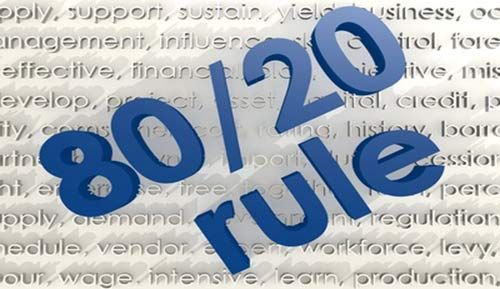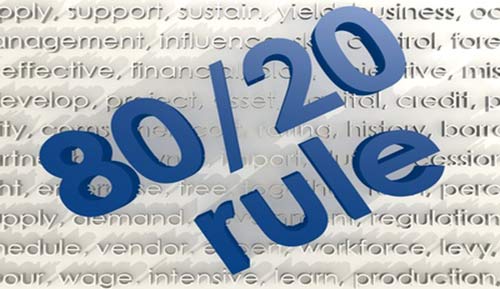Merry “Repeatable” Christmas: Traditions and Templates
“Christmas time is here, happiness and cheer, fun for all that children call, their favorite time of year.” Beautiful sentiment from the beloved “A Charlie Brown Christmas” written by Vince Guaraldi and Lee Mendelson. Many people (like myself and I am sure many of you, my fine readers) watch this show every year and we think of the wonderful memories it brings. It has become repeatable – a tradition in my home. What is your traditional Christmas movie?
Maybe your tradition is “White Christmas”, one of the many “A Christmas Carol” versions, “It’s a Wonderful Life” (I personally like the reworking with Marlo Thomas in “It Happened One Christmas” 1977). I know some folks who are partial to watching the “Lord of the Rings” trilogy or the “Harry Potter” series during the Holidays. Perhaps “Elf”, “A Christmas Story”, or “National Lampoon’s Christmas Vacation” are more your style? Hm… that last one may help me make a point about traditions and repeatability. Do we really have anything to learn from Clark Griswold and his family? Perhaps, as it depends on how you look at it. Although sometimes good and rooted in positive intent, our traditions don’t often work the way we would like. They certainly did not for Clark and family – or did they? This is especially true in the business world when applied to projects. I suggest that some repeatable processes (like requirements templates for example) may very well be the thing that holds us back from being truly successful. What? Sounds like tradition heresy! Well bear with me for awhile and I will elaborate.
So a tradition according to dictionary.com is “the handing down of statements, beliefs, legends, customs, information, etc…, from generation to generation, especially by word of mouth or by practice.” There are a number of reasons we hold onto our traditions. Sometimes we support the handing down of traditions because we associate them with good memories or success. Sometimes we believe it makes us accountable to some higher cause. Whatever the reason, Christmas comes but once a year so we want the tradition to stand because it will ensure further good memories right?
I am going to be the ghost of Christmas past for a moment and let’s listen in on the following conversation: The mother says: “We are having it because it’s a sign of respect to your great Grandmother Merlene.” The son says: “Didn’t everyone last year say they hated marshmallows on the yams? I mean, between that and those onion shoestring mushroom soup green bean things… ugh! Why do we even bother?” The mother says: “No dear, I am sure that can’t be true. I haven’t heard anything like that. Besides, it’s a tradition; everyone loves them!” Okay, yes, we love Grandma (insert your Grandmother’s name here), but do you know why she started those traditions? Why she did what she did?
We hold onto traditions. Someone holds true to the memory or the essence of the thing even if they do not remember why it was started in the first place. Does that mean we should not challenge it? Now I love my Christmas traditions as much as the next person and for the record I am NOT a tradition basher. I like to think of myself as a tradition awareness elf. My Grandmother’s masterpiece; a crocheted Poinsettia tree skirt is under the tree every year. It is truly a thing of beauty – in my eyes, however, for someone else in the house not so much. I am pretty sure they buy extra presents just to cover it up and in fact, there were some empty boxes too… And I get it. The tree skirt does not match the tree decorations even remotely. And for many years I have gone with the tradition. Should I hold onto this tradition?
I came across a story on the internet about traditions. It was about a man who was at a seminar at Cambridge. A student asked the professor why the seminar was run the way it was and asked if it would be more efficiently run in a different format. The answer was of course “This is Cambridge, and we have been doing it this way for more than 800 years.” The author of the article seemed to think this was a good thing because we don’t have to get rid of things for new ones just for the sake of change, and it keeps us anchored to the past and who we are. For our personal lives perhaps, however, for business I have a huge problem with this logic, and I do not think it works in favor of most businesses or their processes, especially templates. In fact, doing it the way you have always done it is going to leave you in the past. Rooted like an anchor, a relic, a company to be purchased or sold or simply fade away. Yes, that tradition/process probably made you successful to begin with and no, we don’t need to change just because something is new and shiny. However, we do need to change, but we need to do so for the right reasons.
As I have gotten older, I realize that it is not the tradition I am tied to, it is the memory of my Grandmother. I can definitely enjoy the hideously yet beautiful Poinsettia crocheted tree skirt differently and still preserve the memory of my Grandmother. I am completely open to finding a new tree skirt that matches the tree which would make a certain someone in the house dance like a happy little elf.
Like our Christmas memories, we hope for “repeats” in our project work. I suggest that “repeatable” can be a dirty word when it comes to projects. Let’s use the example of turkeys and templates. Turkey is boring. One tradition for many folks is the Christmas goose, or in modern times, the turkey. In case you were wondering, the turkeys are not very fond of this tradition. If they could talk, they would definitely tell you they don’t taste that exciting. They would say, “You should stick to the stuffing and potatoes or better yet, get a ham, yeah… that’s the ticket. A ham.” “Ask a pig,” they would say, “He would agree with you I am sure.” So we try to spice up the turkey. We use beer, deep frying, sage and orange stuffing and whatever the latest turkey craze is. Okay, but at the end of the day it’s still turkey. Have you noticed that most of us don’t eat it year round? Even Tofurky probably has better sales in the off-season. The turkey is only as good as what we put into it and around it, and so are the templates we use. The tradition is that the template must be filled out. We have always done it that way. Governance says it must be so. Most folks fill it out and call it requirements. Does this sound like a tradition at your company? Then it is definitely time for ham, or clam chowder, lobster rolls, and maybe even Christmas Eve tacos! It should be no surprise that in my family, we do in fact have Christmas Eve tacos as a tradition.
Our templates are just that, a template; a framework or starting point. They are turkeys. They don’t give us everything we need and they don’t taste that great until we add a lot of stuffing and spice to make it work right. Most templates I run across in companies try to dummy proof the process of business analysis. It does not work. When the project is not successful, someone gets the idea that more should be added to the template to ensure the project is successful the next time. Where is the spice or innovation? Where is the stuffing or process improvement? Everyone knows the best part of the turkey is the crispy skin which does not exist in your template anywhere. If our traditional templates; one-size-fits-all templates were that great, we wouldn’t have failed projects. Templates should only contain the bare minimum. The rest should come from your analysis, the techniques you used, the documentation of the results of your elicitation, and the communication with the stakeholders on what should be included. The template cannot/should not predict what you should do on a project. This tradition needs to change, and that does not just mean to insert the word AGILE.
Look at your traditions and templates differently! What can you improve? What can you bring to the table that the template does not? What can you improve in the process? So I look at “A Charlie Brown Christmas”, and I love my tradition. However, now every time I watch it I look for something different to see what new stories it tells. Who are those dancing kids during the play? Where did they come from? Why don’t they speak? Do they have names? They do. There are two little girls in purple dresses and a boy in a green shirt. The girls are named “3” and “4”, and the boy’s name is “5”. They are named after parts of Charles Schulz’s zip code at the time the show was created. To me those kids are the sage and orange stuffing. Now look at your templates and your day to day processes. Find the new stories to tell. Find the improvements.
Why did Grandma Merlene put the marshmallow on the yams? Probably ran out of brown sugar and could not make candied yams the way she knew how. She knew it was not the food that made the tradition – it was the company. For the record, marshmallows and yams will not pass these lips at the same time. Traditions are good as long as you know why you have them, what is important, and also when they need to change. Templates are good as turkeys – they are just starters. Just know why you have them so that you focus on what the most important story is told to your stakeholders. What advice would you share about changing template traditions? Whatever your traditions, templates or future changes may be, Merry Christmas to all, Merry Christmas from me! y Christmas from me!






